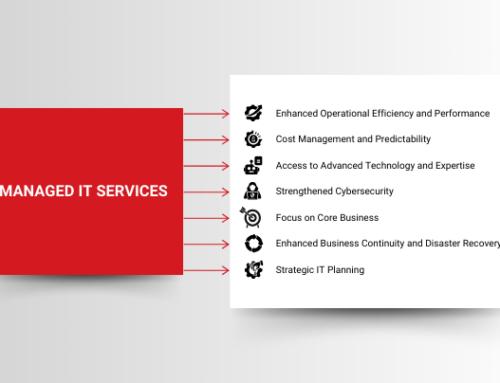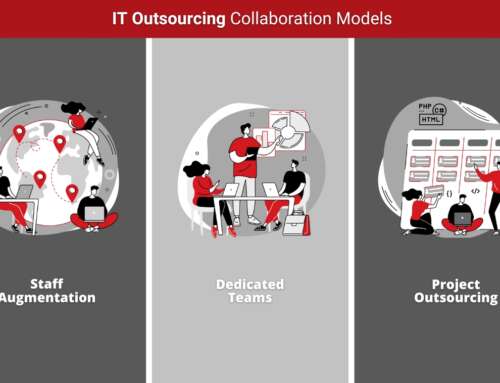A World of Software Development Methodologies
In 1968 the first software development methodology appeared – the Structured Programming Paradigm. Fast forward to today, we have dozens, the most popular of which are Agile, Scrum, DevOps, Lean, and Kanban.
We will take a closer look at each of them. Before that, however, we will elaborate on choosing the right one for your software development projects.
Software Development Processes, Methodologies, and Frameworks
Developers rely on a software development process to create high-quality software and bring it to the market quickly. Such a process encompasses planning, design, deployment, and maintenance of software solutions. What are the key steps?
A requirement analysis marks the beginning of any software development process. Business analysts gather requirements and turn them into tasks for the development team.
From there, the software developers begin work on the product. They run several tests to confirm that the software is ready for production. Users have the final say. If they approve the solution, a rollout follows.
The software development process guides the software creation. The software development methodology assists in maintaining order and effective collaboration within the development team. Finally, there is the software development framework. It acts as a foundation for building a software solution. Each framework is associated with specific programming languages and provides a starting point for developers to add higher-level functionality.
TSD Services specializes in custom software development. We leverage 15+ years of experience and dozens of custom software development projects across industries.
Our service covers custom application development, application customization, legacy application modernization, and application migration.
Our expertise extends from billing solutions and business management software to legal case management applications and third-party system integrations.
Let’s partner up to bring your project ideas into working software solutions:
What Is the Importance of Software Development Methodology?
In the early days of the computing era, software development looked quite different compared to modern practices. Initially, it involved manually coding programs using low-level programming languages like machine code and assembly language. Programmers would write their code on punch cards or paper tape they would feed into computers for batch processing.
Computers of that era had limited processing power, memory, and storage capacity. Programs were executed sequentially. There were no multitasking or parallel processing capabilities like those in modern systems.
Developers didn’t have sophisticated IDEs as we do today. Communication and sharing of code or knowledge happened through physical documents or in-person discussions. Software development cycles were often longer compared to today’s standards. Developing complex programs required meticulous planning and careful consideration of resource limitations.
Nowadays, software development methodologies like Agile and Scrum yield specific ROI:
- In The 2020 State of Agile Report, 83% of respondents stated improved productivity thanks to the Agile methodologies (The 2020 State of Agile Report).
- 77% of respondents in the 15th Annual State of Agile Report (2021) declared that Scrum accelerated their ability to get products to market.
- In the same report, 69% of the people reported a better ability to manage changes in priorities and requirements thanks to Scrum(15th Annual State of Agile Report (2021)

When Is It Time to Choose a Specific Software Development Methodology?
What factors suggest the need for methodology in software development?
Project Size and Complexity: Large-scale projects that require more than 2-teams benefit from a methodology to help coordinate work.
One of our clients, a US-based IT solutions provider partnered with us for expert IT staff augmentation. We overcame the challenge of meeting growing client demands and extending the client’s software development team.
The following case study demonstrates how our client’s achieved success in their software development endeavors thanks to an informed choice. By adopting the right methodology they met client expectations and drove business growth: IT Solutions Provider Extends Its Software Development Team with Expert TSD Resources | TSD Group
Priorities and requirements: Rigidly defined projects require a plan-driven methodology, while high-chance for requirements change calls for a flexible approach such as Agile.
Time Constraints: Early feedback and continuous improvement are crucial for working on short deadlines. A good example is the Agile software development methodology and the Lean practices. Such iterative approaches focus on those things to deliver a working product quickly.
Customer Collaboration and Feedback: The main goal when working with the customer is their engagement throughout the entire work process. The methodology you choose should provide regular feedback loops and iterative development.
Team Expertise: The experience of the team or teams with software development methodologies will determine whether you apply an already used one or introduce a new one into their practice.
Which Are the 5 Most Popular Software Development Methodologies?
Nowadays, the following five software development methodologies top the popularity charts. Let’s see which of their characteristics have made them so widely preferred:
Agile Software Development
95% of the 1,380 global respondents in the fifteenth edition of The State of Agile Report by CollabNet VersionOne, stated that their organizations have adopted Agile development. Similar statistics reports The Agile Alliance’s State of Agile Coaching Report (2020).
The added value of Agile Methodologies (Scum, Kanban, Extreme Programming) is their flexibility which enables teams to respond to changes in requirements and customer feedback.
Agile makes early and continuous delivery of working software achievable. That happens in iterations or increments to demonstrate tangible progress to stakeholders and to provide early feedback.
Hence the emphasis on close collaboration among team members and stakeholders fosters better communication, shared understanding, and customer satisfaction. Continuous improvement is advocated in Agile Software Development through regular retrospectives and feedback loops, leading to enhanced efficiency and quality.
All this makes Agile a suitable choice for projects with evolving requirements and a need for quick value delivery.

Scrum Methodology
The Scrum methodology is a popular Agile framework for managing complex projects. Scrum.org provides information on the prevalence of this framework in its The State of Scrum Report. They reveal that 89% of respondents reported using Scrum in their organizations. Another global membership organization – The Scrum Alliance has certified over 750,000 practitioners Scrum professionals worldwide.
This software development methodology combines time-boxed iterations called sprints and cross-functional teams. During the sprints, the team members collaborate to deliver working increments of software, relying on frequent communication and iterative development.
DevOps Methodology
80% of organizations surveyed for The DevOps Trends Report, share that they are using or planning to adopt DevOps practices.
This software development approach combines development and operations to streamline software delivery and operations. The focus is on automation, collaboration, continuous integration, and deployment.
The DevOps methodology strives to unite development and operations teams with collaboration and shared responsibility, resulting in faster and smoother development cycles. All this creates conditions for increased deployment frequency, reduced time-to-market, and improve overall software reliability.
Lean Software Development
Lean Software Development is derivative from lean manufacturing principles. What helped it gain popularity is its focus on efficiency and waste reduction. The methodology aims to minimize non-value-added activities and accelerate the response to market demand.
Specific statistics on its popularity are limited. However, we can draw a conclusion given that Lean has influenced the Agile movement, and its’ practices are part of those of Agile.
Kanban Methodology
The State of Agile Report regards the Kanban Methodology as the second most popular Agile methodology after Scrum. Kanban is an Agile visualization, and it emphasizes limiting work in progress. At the core, this workflow management method has a visual board where teams track tasks, work status, and backlog.
Check out how Toggl Track explains some of the most popular software development methodologies using cars as an example: Software Development Explained With Cars | Toggl Track

How To Choose the Most Suitable Software Development Methodology?
The types of context against which to adjust your choice of software development methodology- project, team, and organizational. And these factors derive from them:
- Stakeholder engagement: Their participation is crucial to ensure a well-rounded understanding of the project’s needs.
- Customer commitment: Higher engagement from the client requires methodologies such as Agile and Scrum.
- Organizational culture, policies, and governance: There should be alignment between the software development methodology and the business culture and structure. Consider whether the methodology suits the existing organizational context.
- Resources: These factors may generate constraints if you do not account for them – timeline, requirements, and technological resource
- Team expertise: At the beginning of the project, it is necessary to evaluate the experience and skills of the teams with specific software development methodologies. Consider their preferences and strengths. The final choice should match their way of working and their strengths. In a separate material, we have collected practical tips for finding the Right IT Skill Set for Your Project: How To Find the Right IT Skill Set for Your Project | TSD Group
- Project requirements: Imagine each project as a roadmap from an idea to a final product. It should include the goals, scope, timeline, and an estimate of the level of uncertainty in project requirements. That would determine what are the suitable software development methodologies.
- Project Size and Complexity: There are software development methodologies that provide better structure and risk management. Those are suitable for larger projects. Methodologies that focus on freedom for improvisation are complementary for smaller projects or such that do not have rigid requirements.
In case you need further information or help with the selection of the right methodology for your project, don’t hesitate to get in touch with us today and claim your free IT consultation with a TSD expert.









Leave A Comment